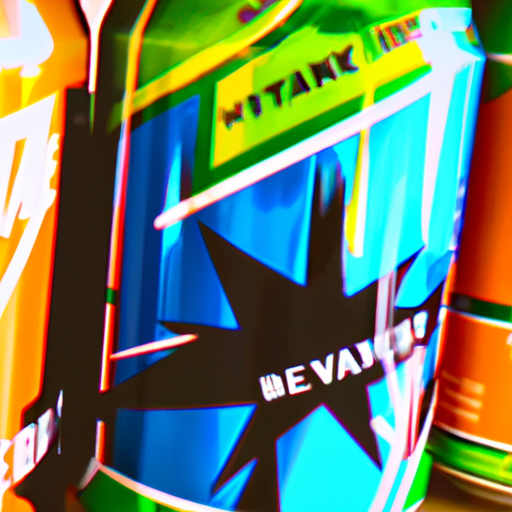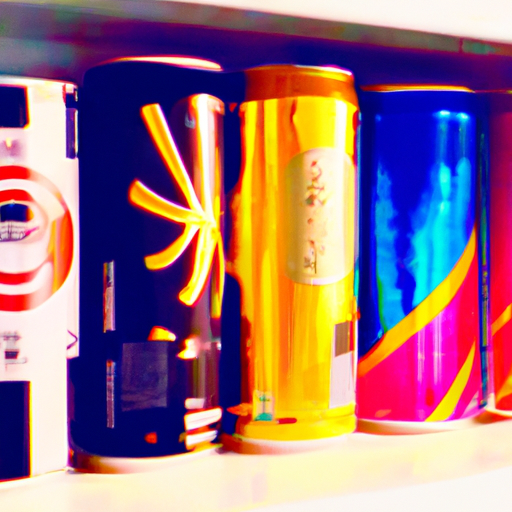
-
Table of Contents
- Beverage Packaging: Standing Out on the Shelf
- The Power of Packaging
- Understanding Consumer Preferences
- Designing Eye-Catching Packaging
- Case Studies: Successful Beverage Packaging Designs
- 1. Coca-Cola’s “Share a Coke” Campaign
- 2. Bai’s Antioxidant Infusion Drinks
- The Future of Beverage Packaging
- Summary
Beverage Packaging: Standing Out on the Shelf

In today’s competitive market, beverage companies face the challenge of capturing consumers’ attention and standing out on the shelf. With numerous options available, packaging plays a crucial role in attracting customers and influencing their purchasing decisions. This article explores the importance of beverage packaging and provides valuable insights on how companies can create compelling designs that differentiate their products.
The Power of Packaging
Beverage packaging serves multiple purposes beyond just containing the product. It acts as a powerful marketing tool, communicating brand identity, product attributes, and enticing consumers to make a purchase. According to a study by Nielsen, 64% of consumers try a new product because the packaging catches their eye.
Effective packaging design can create a strong emotional connection with consumers, leading to increased brand loyalty and repeat purchases. It can also help establish a premium image for the product, allowing companies to charge higher prices and increase profitability.
Understanding Consumer Preferences
Before designing beverage packaging, it is essential to understand consumer preferences and market trends. Conducting market research and analyzing consumer behavior can provide valuable insights into what attracts customers and influences their purchasing decisions.
One key trend in beverage packaging is the growing demand for sustainable and eco-friendly options. Consumers are increasingly concerned about the environmental impact of packaging materials and are more likely to choose products with recyclable or biodegradable packaging. For example, Coca-Cola’s PlantBottle, made from plant-based materials, has gained popularity due to its reduced carbon footprint.
Another important consideration is convenience. Consumers are often looking for packaging that is easy to use, transport, and store. For instance, the rise of on-the-go consumption has led to the popularity of single-serve bottles and cans that are portable and convenient for busy lifestyles.
Designing Eye-Catching Packaging
Creating eye-catching packaging is crucial for capturing consumers’ attention and differentiating products from competitors. Here are some key elements to consider when designing beverage packaging:
- Color: Colors evoke emotions and can influence purchasing decisions. Choosing the right color palette that aligns with the brand and product attributes is essential. For example, vibrant colors like red and orange can create a sense of energy and excitement, while pastel colors can convey a more calming and soothing effect.
- Typography: Fonts play a significant role in packaging design. The typography should be legible, reflect the brand’s personality, and convey the product’s message. For example, a playful and bold font may be suitable for a children’s beverage, while an elegant and sophisticated font may be more appropriate for a premium product.
- Shape and Structure: Unique shapes and structures can make a product stand out on the shelf. For example, the iconic contour shape of the Coca-Cola bottle has become instantly recognizable and associated with the brand. Unconventional structures can create intrigue and curiosity, attracting consumers to explore the product further.
- Graphics and Imagery: Visual elements such as illustrations, images, and patterns can enhance the appeal of beverage packaging. They should be relevant to the product and target audience, conveying the brand’s story and values. For example, Innocent Drinks uses playful illustrations of fruits on their packaging, emphasizing their commitment to natural and healthy ingredients.
- Labeling and Information: Clear and informative labeling is essential for consumers to make informed choices. Important information such as ingredients, nutritional values, and certifications should be easily visible and legible. Additionally, incorporating QR codes or augmented reality features can provide interactive experiences and engage consumers further.
Case Studies: Successful Beverage Packaging Designs
Examining successful beverage packaging designs can provide valuable inspiration and insights. Here are two notable case studies:
1. Coca-Cola’s “Share a Coke” Campaign
In 2011, Coca-Cola launched the “Share a Coke” campaign, replacing the brand’s logo on bottles with popular names. This personalized packaging design aimed to create a sense of connection and encourage consumers to share the product with others. The campaign was a huge success, increasing Coca-Cola’s sales by 2.5% in the United States and 7% in Australia.
2. Bai’s Antioxidant Infusion Drinks
Bai’s Antioxidant Infusion Drinks gained popularity not only for their unique flavors but also for their visually appealing packaging. The bottles feature vibrant colors, bold typography, and captivating imagery of fruit. This design effectively communicates the brand’s commitment to natural ingredients and healthy living, attracting health-conscious consumers.
The Future of Beverage Packaging
The beverage packaging industry is continuously evolving to meet changing consumer preferences and market trends. Here are some emerging trends that are shaping the future of beverage packaging:
- Minimalism: Minimalistic designs that focus on simplicity and clean aesthetics are gaining popularity. This trend reflects consumers’ desire for transparency and authenticity.
- Smart Packaging: With advancements in technology, smart packaging is becoming more prevalent. Features like temperature indicators, freshness sensors, and interactive elements enhance the consumer experience and provide valuable information.
- Personalization: Customization and personalization are becoming increasingly important. Companies are leveraging digital printing technologies to create unique packaging designs tailored to individual consumers.
- Sustainability: The demand for sustainable packaging options will continue to grow. Companies are exploring innovative materials, such as bioplastics and compostable packaging, to reduce their environmental footprint.
Summary
Beverage packaging plays a crucial role in capturing consumers’ attention and influencing their purchasing decisions. Understanding consumer preferences, market trends, and incorporating eye-catching design elements are essential for creating compelling packaging. Successful case studies, such as Coca-Cola’s “Share a Coke” campaign and Bai’s Antioxidant Infusion Drinks, demonstrate the power of effective packaging design. As the industry evolves, trends like minimalism, smart packaging, personalization, and sustainability will shape the future of beverage packaging. By investing in innovative and visually appealing packaging, beverage companies can stand out on the shelf and build strong connections with consumers.
